After some 7 years of immaculate service our Ariston Hotpoint "ECO" 8 kg capacity & 1600 rpm spin, "WMD 863B EU" model,
started some "growling" in its spin cycle, driving my beloved up the wall (see pic - the machine: neither the partner nor the wall):
The sound got louder and louder thru the weeks, making us all realize: "Some things needs to get done by somebody."
My 1st thought: Change of bearings & oil seal: How hard can that be? Famous last words...
Also being cheap-to-the-bone - I didn't want to spend app 620 bucks for a new washer of similar capacity,
so I forewarned about a 1 week standstill for our present one, giving all the sensitive persons in the area time to clean their necessities.
Meanwhile, doing some Interweb research regarding spare bearing kits for the model in question: Nada!
There was a spare part being offered, all right: An entire "drum unit" for a mere 200 bucks.
"BS" I thought - a purported "eco friendly" machine would never provide that sort of landfill waste...
-Any reader suggestions on the environmental friendliness of ditching an entire drum to replace a coupla bearings and a seal?
So: Armed with the necessary and sufficient tools and hopefully ditto skills and knowledge for the job,
I happily unplugged the water and drain hose and electrical cable without mishaps.
Reverse engineered the machine : top lid, front and rear panels, unbolting the motor and belt,
dislodged the front bellows, unplugged all the electrical connectors AFTER marking all their proper places,
taking cellphone shots of crucial places, loosen the concrete top weight and marking all the bolts.
Last was the bottom hose clamp, then "the Sealed Unit" was just hanging in two springs on two dampers.
Turning the drum did produce a resonant growl in the unit, so I seemed on the right track.
Getting the unit up and out of the enclosure went smooth though it was a pretty heavy lift.
The entire machine weighs in at over 75 kgs. Unbolted the bottom concrete block.
45 minutes had elapsed - this was going even better than expected!
-Y'a all still remember the "Pt 1" in the title, right?
-Voila: "The Unit".
The Greeks called their fundamental constituent particle "Atom", "ἄτομος": greek for "inseparable",
only to be proved false some 25 centuries later.
Consequently I was very much in the mood for dividing "The Unit" (alleged by some manufacturer) into its constituent parts:
Trying to prove I'm not entirely nuts, I had previously drilled a lot of 5,2 mm holes through the "weld seam" in the two halves,
providing a means of rigidly holding them together with M5 screws and nuts in the bright, promising future.
Hypothesis for keeping the previously "Sealed Unit" water-tight will probably be revealed and tested,
given I can get the old bearings out, and new ones could be found and delivered.
2B continued...


 LinkBack URL
LinkBack URL About LinkBacks
About LinkBacks
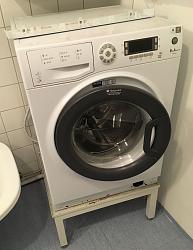

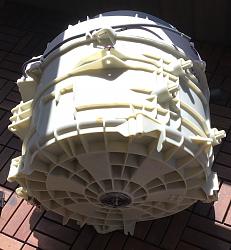
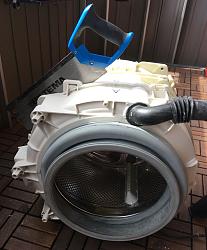


 Reply With Quote
Reply With Quote

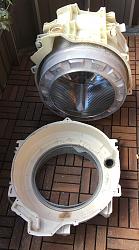
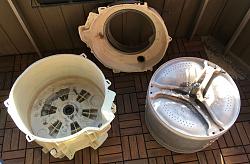
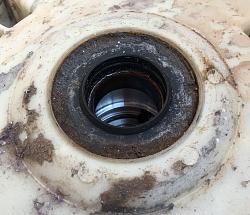
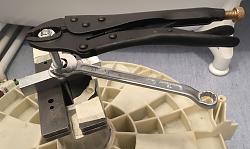
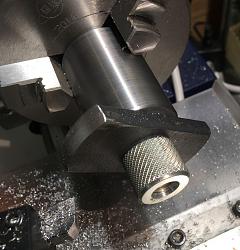
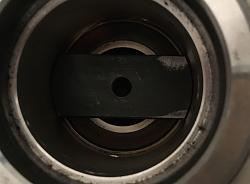
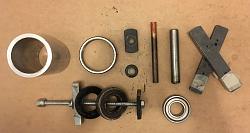
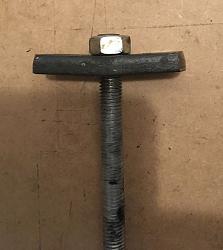

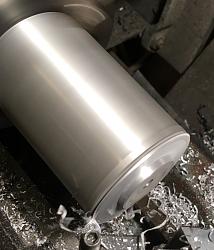
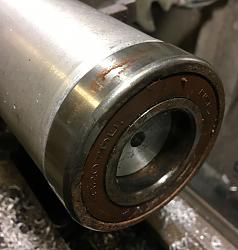
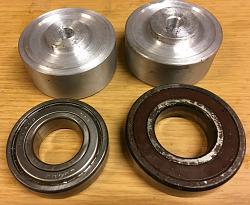
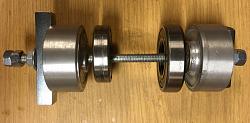


Bookmarks